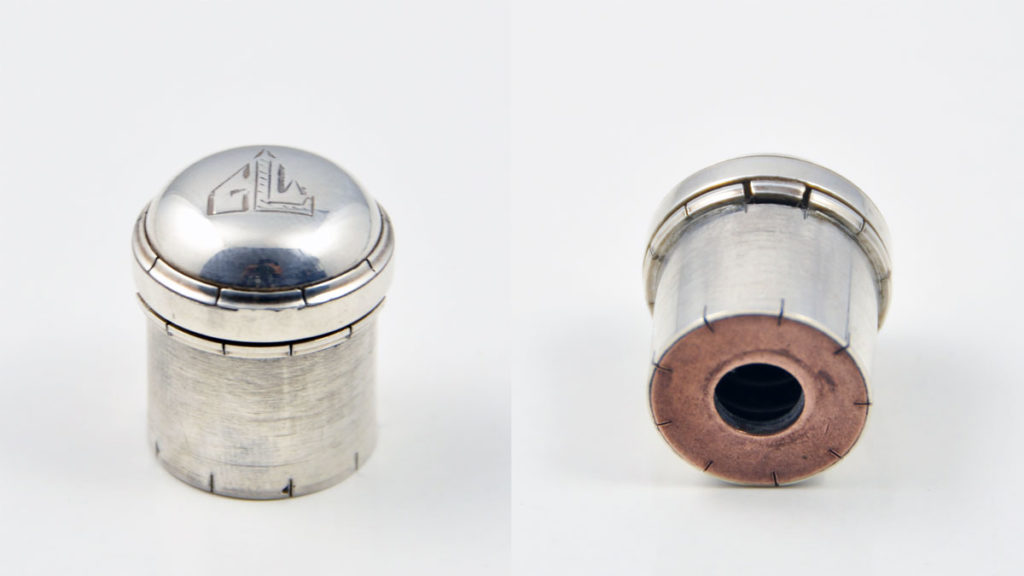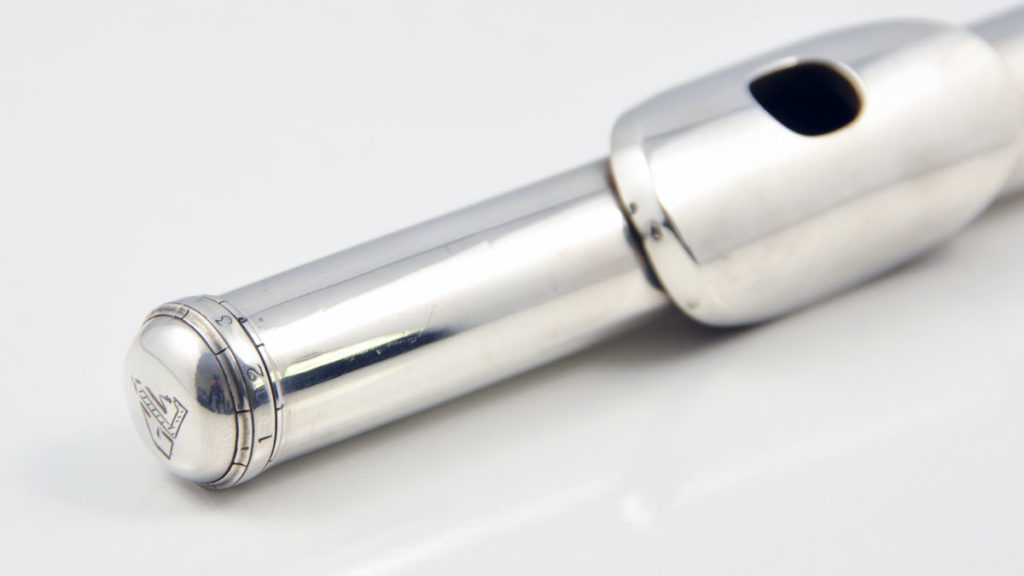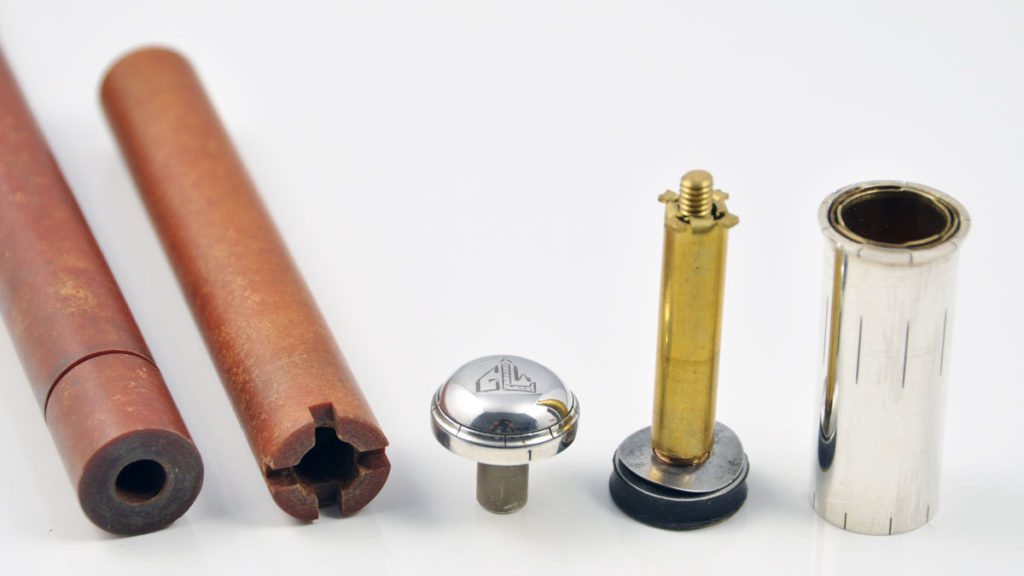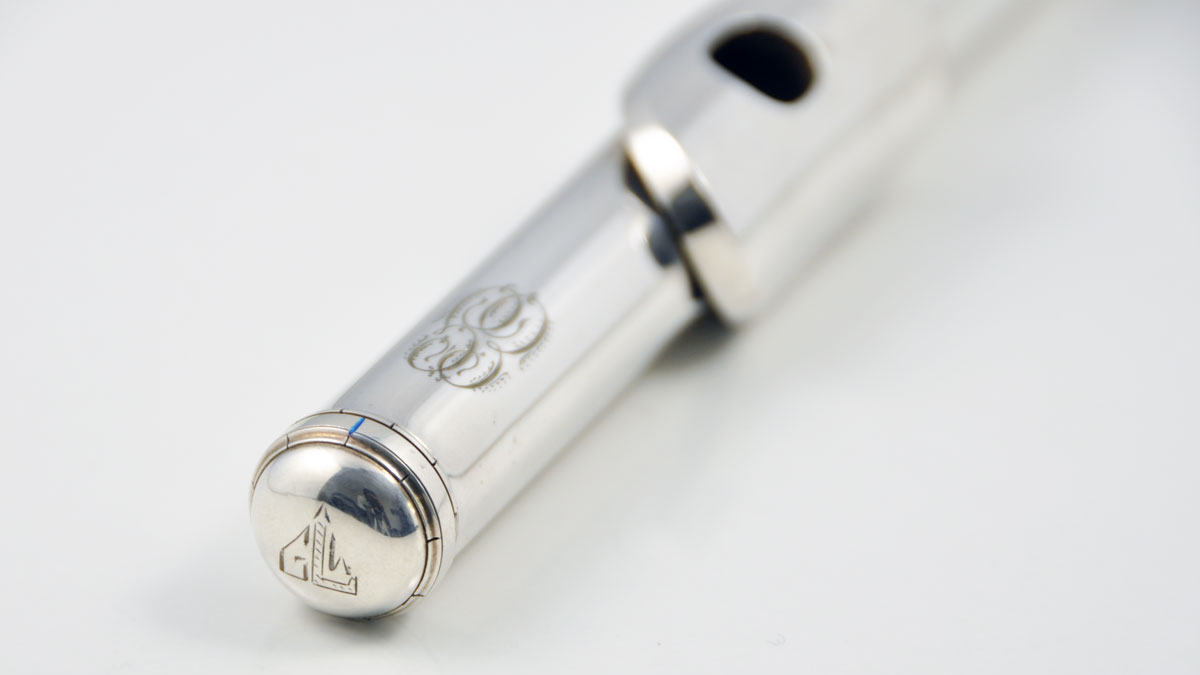The crown and stopper of a flute may seem to be nothing more than a protective top and moveable plug for the headjoint. Yet, the material, weight, and construction of the crown assembly will affect the overall performance of any flute. A vibrant flute tube, whether of platinum, gold, silver, or brass, can only achieve its optimal sound through an equally vibrant crown assembly.
How do you know if you could benefit from a Lewis Crown?
- Your flute isn’t responding as quickly as you’d like.
- Certain notes sound stiff or muffled.
- Frequent note breaking with large interval jumps.
- Uneven tone color from left hand to right hand.
If your flute is mechanically sound but you still experience any of the above issues, a Lewis Crown might be the solution for you. Players often hear the difference immediately.
- Response is quicker.
- Articulation is cleaner.
- Interval jumps are smoother.
- Tone color is more even throughout the registers.
- The overall sound has more depth and is more refined.
Gary Lewis offers two types of crowns, depending on your needs.
- The Lewis Crown
- The Lewis Selectable Crown Assembly
The Lewis Crown

The Lewis Crown is a patented design that can be used on any flute, whether it be vintage or modern, professional or intermediate. It combines three unique designs into a single unit which replaces the traditional crown:
- A spring linkage to reduce tension at the top of the headjoint and allow for freer vibration of the flute tube.
- A carefully tuned resonator to even out tone colors between the right hand and left hand. In many flutes, the D – E – F regions of the first and second registers do not often match the tone colors of the left hand. The resonator fixes that.
- An extension tube to add depth to your sound, refine legato lines and interval jumps, and temper brightness in the upper register.
Using the crown is very easy. Just replace your original crown with the Lewis Crown and align the logo to your embouchure plate.
(The top photo shows the Lewis Crown installed on a silver-plated Bonneville flute made in 1890. The owner finds that it smooths out much of the roughness that is common with Bonneville flutes, yet maintains the rich, complex sound that Bonneville is known for.)
The Lewis Crown (sterling silver): $395
The Lewis Selectable Crown Assembly
The patented Lewis Selectable Crown Assembly is similar to the Lewis Crown, but it replaces the entire cork assembly on your flute to allow full vibration of the entire flute, from the crown to the foot. The crown assembly also allows you to select three levels of response, depending on your needs. All you need to do is turn the crown slightly to change the level of vibration of the headjoint.

With the crown at the third position or highest level of response, you will experience:
- More depth and openness in the first register.
- More refinement in the third register.
- Quicker response.
- Clearer articulation.
- Smoother interval jumps.
In short, with the crown set at the third position, your flute is at its maximum vibrational potential. Some players use the crown in the third position for all of their performance needs. Others use it specifically to blend better with other instruments in a small ensemble.
However, some players find the third position difficult to manage because the headjoint is very responsive and requires less air. It’s like driving a well-tuned sports car. So you should allow some time to acquaint yourself with the new response, which is why the crown has two other positions to utilize.
With the crown in the first position, the response is comparable to the Lewis Crown. You may experience a similar resistance as with a cork assembly, but you will have access to a freer vibrating headjoint – the lower register will have a tighter resonance, while the upper register maintains brightness. The first position is ideal for orchestral playing or when you need to use a large volume of air.
The second position is intermediate between the first and third positions. We recommend using the second position to become acquainted with the flute’s extra resonance. This position is a good starting point for most players until they find the right air pressure to use.

Detailed instructions and tools for installing the Lewis Selectable Crown Assembly are included in your purchase. You can also send your headjoint to the workshop for installation at no additional charge. Just pay for shipping to and from the workshop.
Lewis Selectable Crown Assembly (sterling silver): $695
Which crown should I use?
The Lewis Crown is the more affordable option of the two and can be used on any headjoint. If you have multiple flutes, you can easily switch it to a new headjoint by simply swapping the original crown with the Lewis Crown. The original cork is still kept in place.
The Lewis Selectable Crown Assembly replaces the entire cork and crown assembly and allows full vibration of the entire flute, from the crown to the foot. This crown assembly is preferred by players who play on only one instrument, has a particular instrument that requires its enhancements, or likes the flexibility of modifying tone and response on the fly.
How can I try one on my flute?
Ready to try out a Lewis Crown or a Lewis Selectable Crown Assembly? Write to us and let us know. We’ll send you one for trial. A small deposit may be necessary to cover shipping costs.

